Ronnie Coleman, the indomitable eight-time Mr. Olympia champion, stands as an epitome of strength and dominance in the world of professional bodybuilding.
His journey to becoming “The King” was not a smooth ascent it was a tale of resilience, evolution, and a relentless pursuit of excellence.
In 2005, Ronnie Coleman etched his name in history by securing his eighth Sandow trophy, tying the legendary Lee Haney’s record.
Contrary to popular belief, Ronnie Coleman’s initial foray into the Mr. Olympia stage wasn’t marked by immediate success.
The first five appearances saw him outside the top five. It was in 1998 that he clinched his maiden Sandow trophy, setting the stage for an unprecedented reign.
The Transformational Year: 1997
In 1997, a pivotal year for Ronnie Coleman, he redefined his approach to training, nutrition, and recovery. This transformation laid the foundation for his future successes.
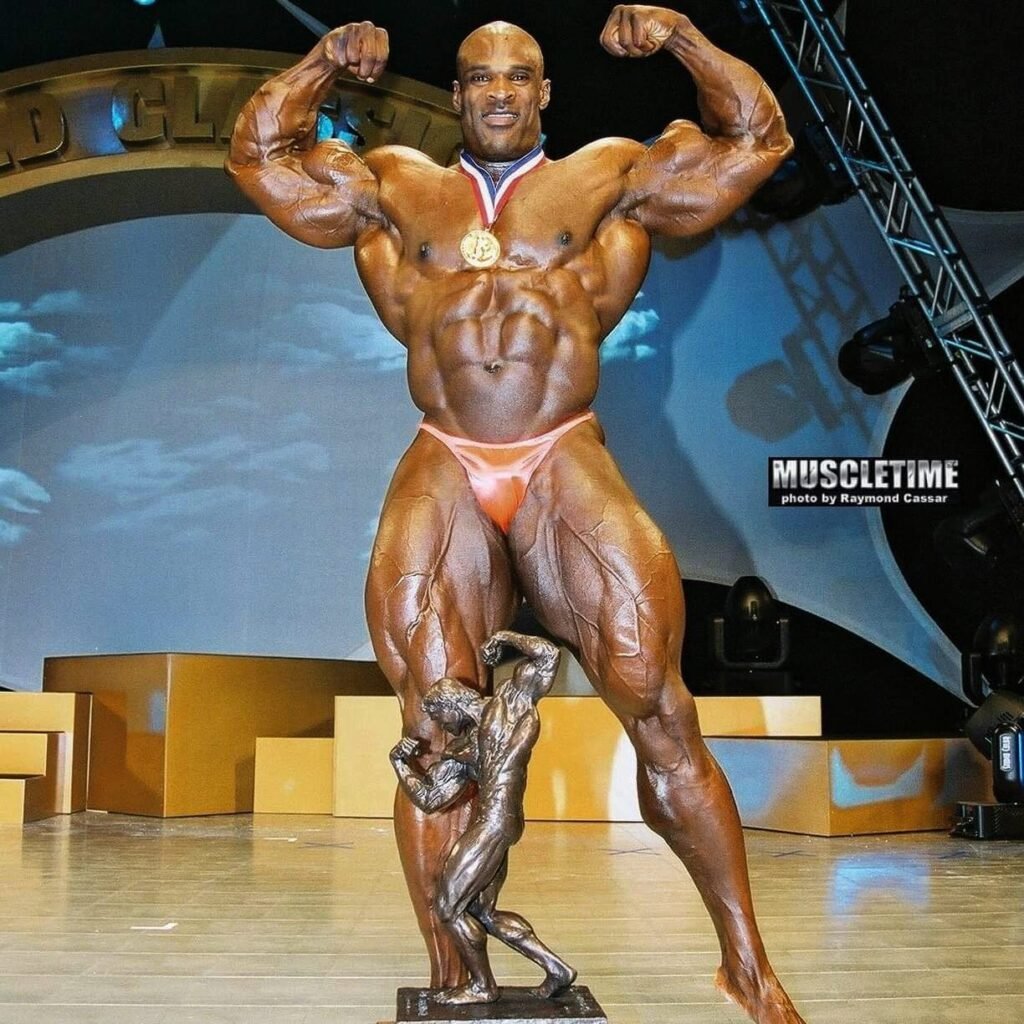
As a former police officer, Ronnie Coleman brought discipline and dedication to his pursuit of bodybuilding glory.
This article unravels the secrets that turned Ronnie Coleman into a force of nature and explores the training and nutrition principles that fueled his unstoppable strength.
Ronnie Coleman’s Monumental Lifts
The core of Ronnie Coleman’s strength lay in his ability to lift unimaginable weights. Unlike many bodybuilders who prioritize muscle contractions for hypertrophy, Ronnie Coleman embraced heavy lifting as a catalyst for profound muscle engagement and growth.
His workouts, often referred to as “monstrosities,” were characterized by lifting weights that surpassed conventional norms.
Let’s delve into some of Ronnie Coleman’s most iconic lifts:
| Deadlift | 800 Pounds (363 Kilograms) for 2 Reps |
| Squat | 800 Pounds (363 Kilograms) for 2 Reps |
| Bench press | 500 Pounds (227 Kilograms) for 5 Reps |
| Dumbbell Bench Press | 200 Pounds (91 Kilograms) for 12 Reps |
| Military Press | 315 Pounds (143 Kilograms) for 12 Reps |
| Bent-Over Row | 515 Pounds (234 Kilograms) for 10 Reps |
| T-Bar Row | 540 Pounds (245 Kilograms) for 9 Reps |
| Front Squat | 585 Pounds (265 Kilograms) for 4 Reps |
| Leg Press | 2,300 Pounds (1,043 Kilograms) for 8 Reps |
These staggering numbers from Ronnie Coleman’s training videos showcase a level of strength rarely witnessed in the realm of bodybuilding. These lifts became the foundation of “The King’s” dominance.
Ronnie Coleman’s Training Philosophy
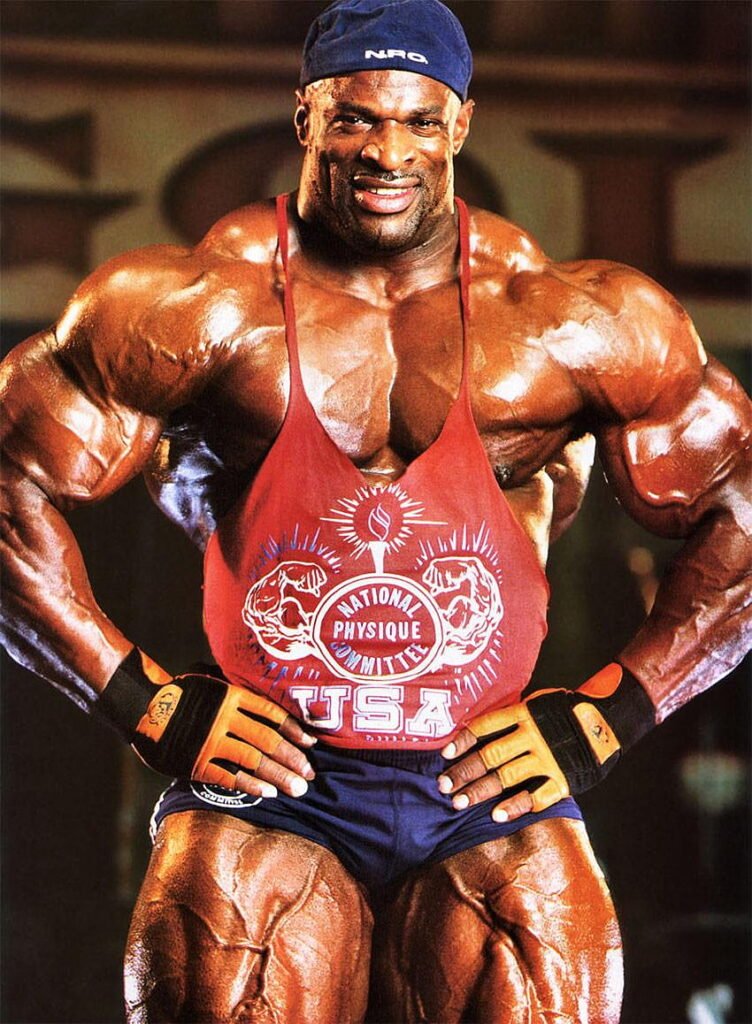
1. High Volume Training
Ronnie Coleman’s workouts were characterized by high volume and intensity.
His belief in the mantra “more volume, better results” fueled his training sessions, often lasting between two to three hours.
The infamous 2,300-pound leg press, showcased in “The Cost of Redemption” (2003) training video, exemplifies his commitment to pushing boundaries.
2. Basic Movements
Despite the availability of advanced gym equipment, Ronnie Coleman adhered to basic compound movements. Squats, deadlifts, and bench presses were staples in his training regime.
Even in a humble Texas gym without air conditioning, Ronnie Coleman stuck to these fundamental exercises, showcasing his dedication to the basics.
3. Recovery
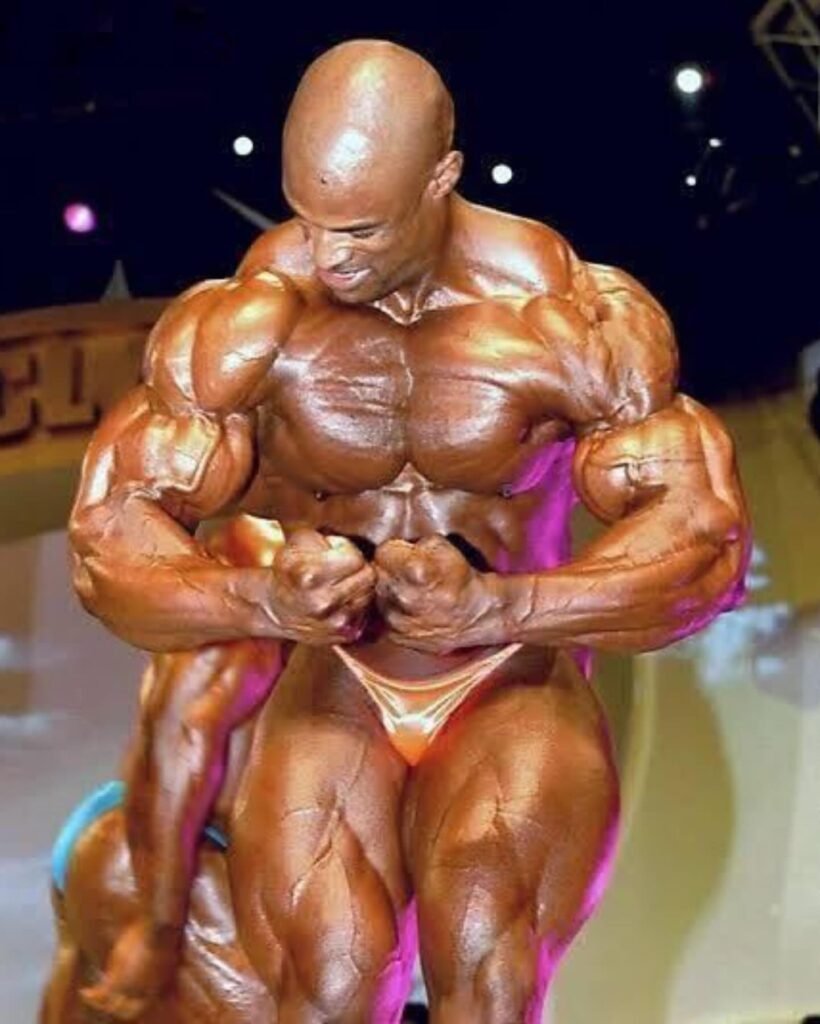
Understanding the significance of recovery, Ronnie Coleman incorporated strategic measures to optimize muscle repair.
His off-season diet, consisting of 6,000 daily calories, complemented intense training. Regular massages and chiropractic sessions became integral components of his recovery routine.
4. Mindset
Ronnie Coleman’s training philosophy extended beyond the physical realm it delved into the psychological domain.
His infamous catchphrases like “Lightweight, baby!” and “Yeah, buddy” reflected not just bravado but a mindset of unwavering self-belief.
His training videos were devoid of elaborate explanations, mirroring his business-like approach to lifting.
Ronnie Coleman’s Key Exercises
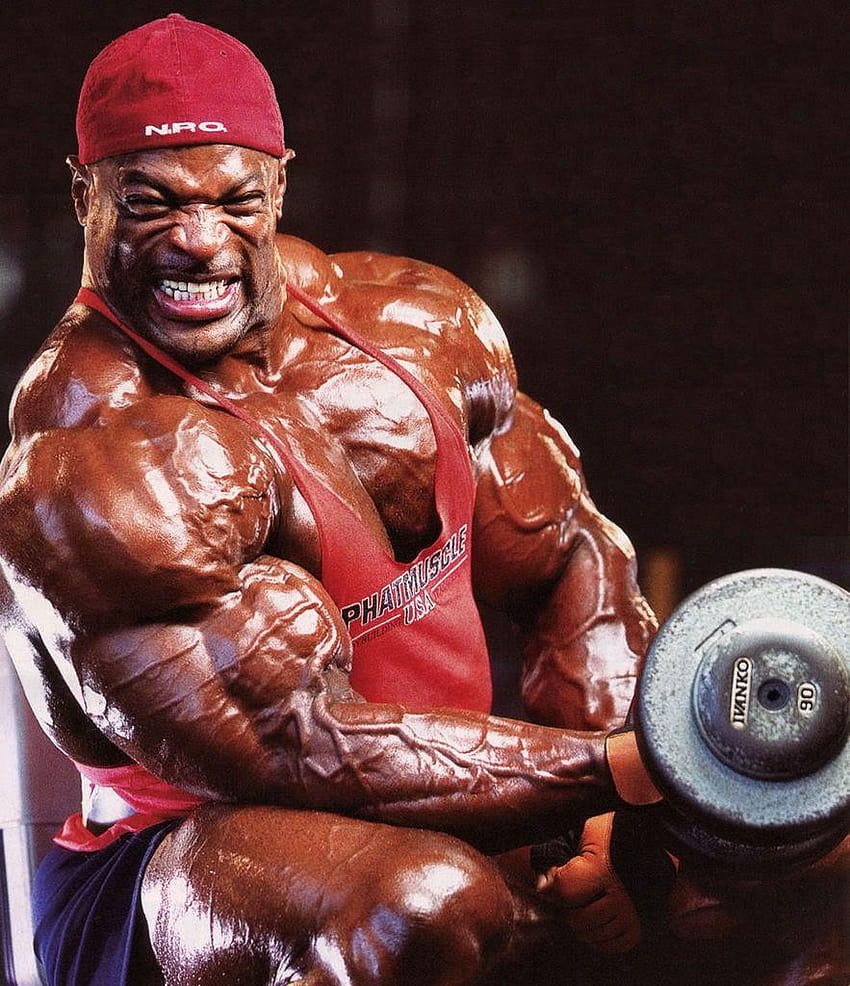
While Ronnie Coleman varied his workouts to prevent plateaus, certain exercises remained constant throughout his career.
The trifecta of squats, deadlifts, and bench presses formed the cornerstone of his training. Here’s a closer look at each:
1. Squats
Ronnie Coleman’s love for heavy back squats defined his leg workouts. Opting for a hip-width stance, he achieved optimal depth for maximal muscle fiber stimulation. Front squats and hack squats were also part of his repertoire.
2. Deadlifts
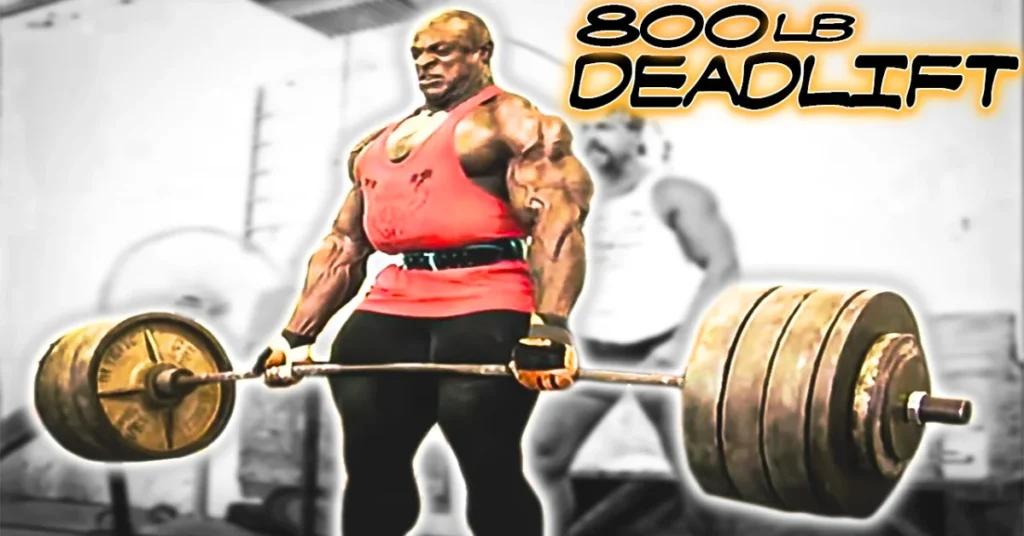
The deadlift, a paramount exercise for overall strength and muscle mass, witnessed Ronnie Coleman’s prowess with an astonishing 800 pounds for a double.
Romanian deadlifts were incorporated to target specific muscle groups.
3. Bench Press
The barbell bench press took center stage in Ronnie Coleman’s chest workouts. Incline and decline bench presses were employed to sculpt upper and lower pecs.
His proficiency in these lifts even led him to participate in powerlifting meets.
Ronnie Coleman’s Workout Program
Ronnie Coleman’s six-day training split offers insights into his meticulous approach:
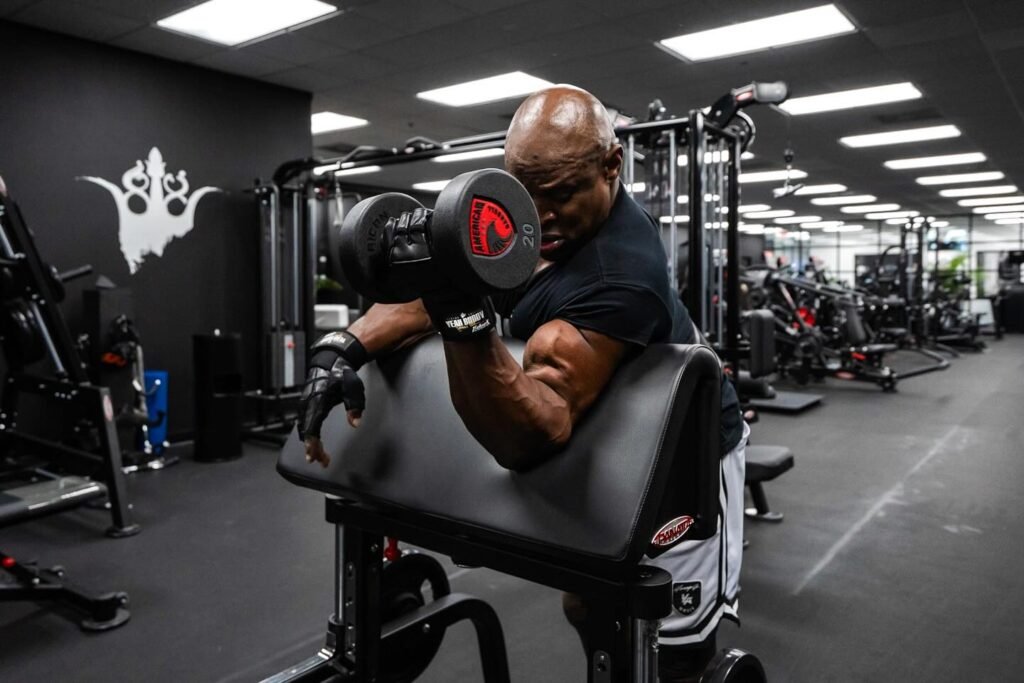
Day 1: Quads, Hams, and Calves
| Barbell Squat | 3 Sets, 15 Reps |
| Barbell Hack Squat | 3 Sets, 15 Reps |
| Leg Extensions | 3 Sets, 15 Reps |
| Leg Curls (Standing, Lying, and Seated) | 3 Sets, 15 Reps |
| Seated Single-Leg Curl | 3 Sets, 15 Reps |
| Seated Calf Raise | 3 Sets, 15 Reps |
Day 2: Back and Triceps
| Bent-Over Barbell Row | 3 Sets, 15-20 Reps |
| Lying T-Bar Row | 3 Sets, 15-20 Reps |
| One-Arm Dumbbell Row | 3 Sets, 15-20 Reps |
| Wide-Grip Lat Pulldown | 3 Sets, 15-20 Reps |
| Triceps Dips | 3 Sets, 15-20 Reps |
| Standing Dumbbell Triceps-Extension | 3 Sets, 15-20 Reps |
| Lying Triceps Press | 3 Sets, 15-20 Reps |
Day 3: Shoulders
| Overhead Shoulder Press | 3 Sets, 15 Reps |
| Side Lateral Raise | 3 Sets, 15 Reps |
| Front Dumbbell Raise | 3 Sets, 15 Reps |
| Seated Bent-Over Dumbbell Rear Deltoid Raise | 3 Sets, 15 Reps |
Day 4: Chest and Biceps
| Medium Grip Barbell Bench Press | 3 Sets, 20 Reps |
| Medium Grip Barbell Incline Bench Press | 3 Sets, 20 Reps |
| Decline Barbell Bench Press | 3 Sets, 20 Reps |
| Barbell Curls | 3 Sets, 20 Reps |
| One-Arm Dumbbell Preacher Curl | 3 Sets, 20 Reps |
| Alternate Hammer Curl | 3 Sets, 20 Reps |
Day 5: Quads, Hams, and Calves
| Barbell Squat | 3 Sets, 15 Reps |
| Barbell Hack Squat | 3 Sets, 15 Reps |
| Leg Extensions | 3 Sets, 15 Reps |
| Leg Curls (Standing, Lying, and Seated) | 3 Sets, 15 Reps |
| Seated Single-Leg Curl | 3 Sets, 15 Reps |
| Seated Calf Raise | 3 Sets, 15 Reps |
Day 6: Chest, Triceps, and Abs
| Incline Dumbbell Press | 3-4 Sets, 12 Reps |
| Decline Barbell Press | 3-4 Sets, 12 Reps |
| Incline Dumbbell Flys | 3-4 Sets, 12 Reps |
| Decline Dumbbell Press | 3-4 Sets, 12 Reps |
| Cambered-Bar Triceps Extensions (Lying and Seated) | 3-4 Sets, 12 Reps |
| Triceps Dips | 3-4 Sets, 12 Reps |
| Donkey Calf Raises | 3-4 Sets, 12 Reps |
| Seated Calf Raises | 3-4 Sets, 12 Reps |
| Crunches | 3-4 Sets, 12 Reps |
It’s crucial to note that individual responses to training programs vary. Factors such as genetics, age, and sex play a role. Rather than aiming for replication, individuals should draw inspiration from Ronnie Coleman’s dedication and tailor their approach accordingly.
Ronnie Coleman’s Nutrition for Unstoppable Strength
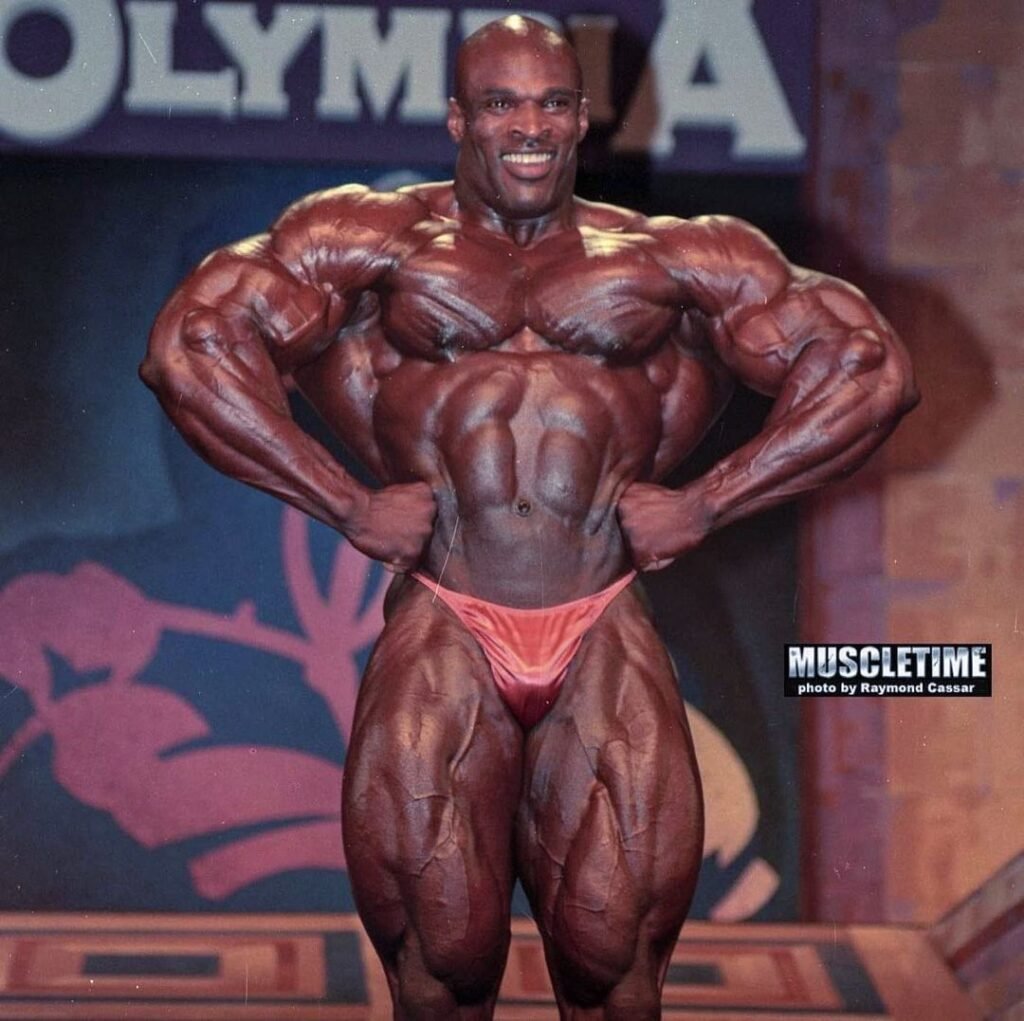
Protein
Acknowledging protein as the foundation for muscle building, Ronnie Coleman aimed for 1 gram per pound of body weight daily.
His protein sources included lean meats, eggs, dairy, and supplements.
Carbs
Ronnie Coleman adopted carb cycling, alternating between high and low-carb days.
This strategy aligned intense workouts with high-carb days to optimize glycogen reserves for performance.
Fats
Contrary to misconceptions, healthy fats were integral to Ronnie Coleman’s diet. Nuts, seeds, fatty fish, olive oil, and avocado contributed to his daily healthy fat intake.
Recovery & Mindset
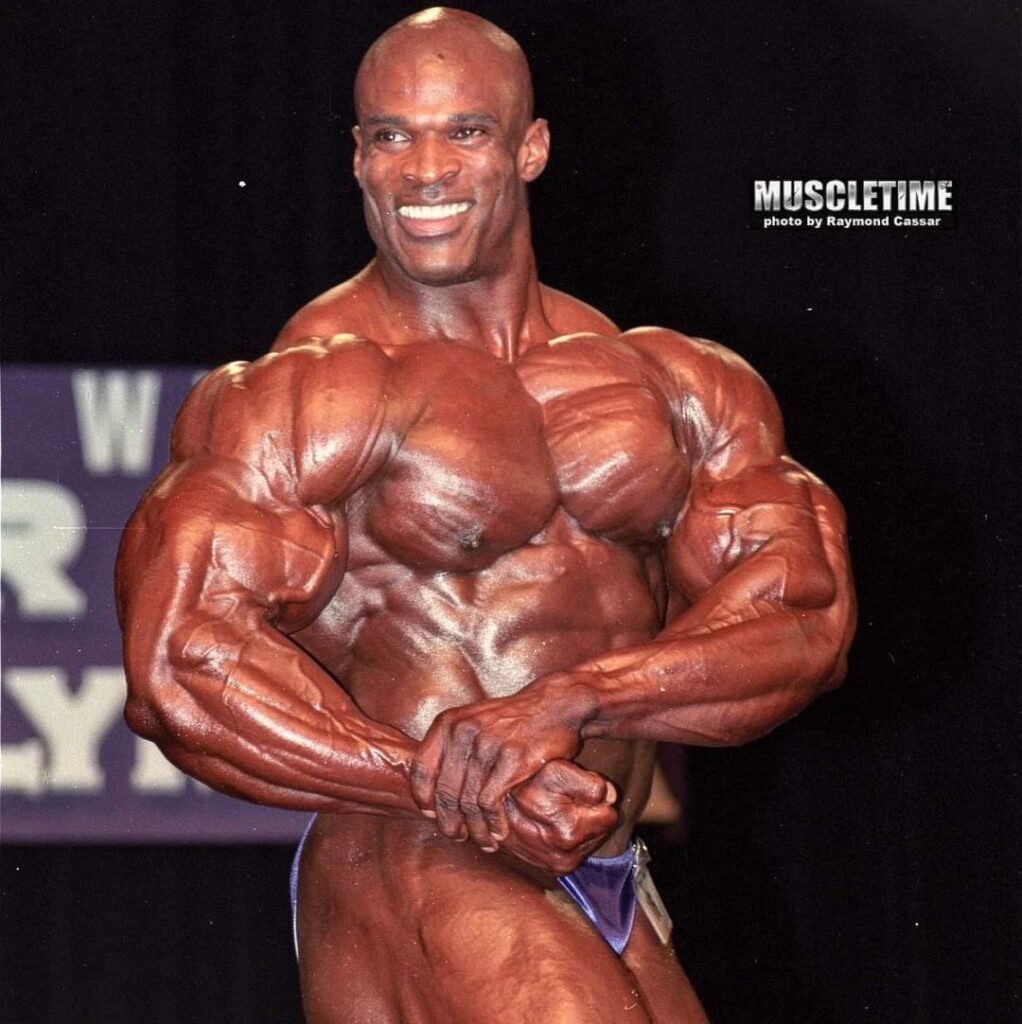
Mindset
Ronnie Coleman’s mental fortitude was as remarkable as his physical prowess. Catchphrases like “Lightweight, baby!” served as pep talks, affirming his positive self-talk and unyielding self-belief.
Recovery
Recognizing the importance of recovery, Ronnie Coleman balanced intense training with strategic de-load weeks.
Adequate sleep, massages, and chiropractic sessions were vital components of his recovery regimen.
Ronnie Coleman’s Enduring Legacy
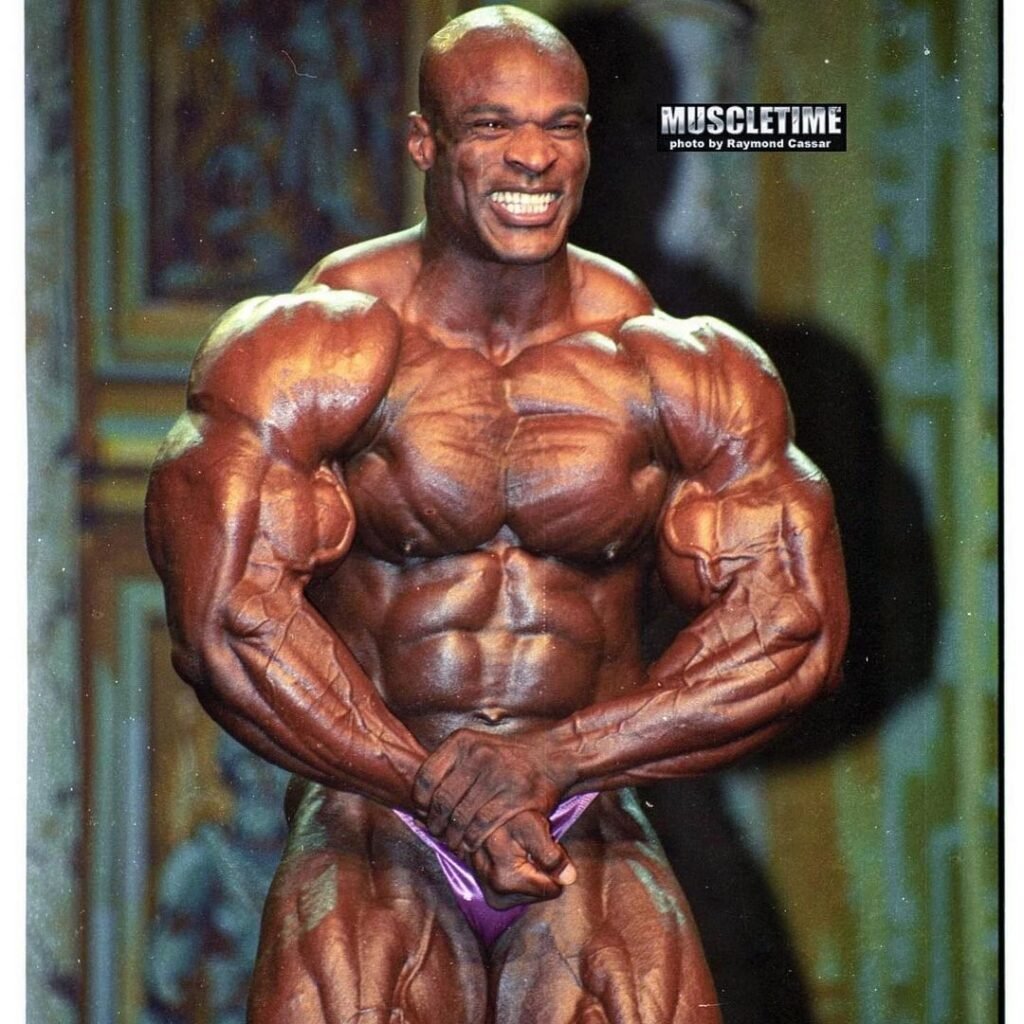
Ronnie Coleman’s impact on bodybuilding is profound, leaving an indelible mark on the sport:
Mass Monster Era Goes Mainstream
While Dorian Yates initiated the mass monster era, Ronnie Coleman’s victory in 1998 solidified its acceptance.
His dominance shifted the focus from aesthetics to sheer muscle mass.
Training Like a Beast
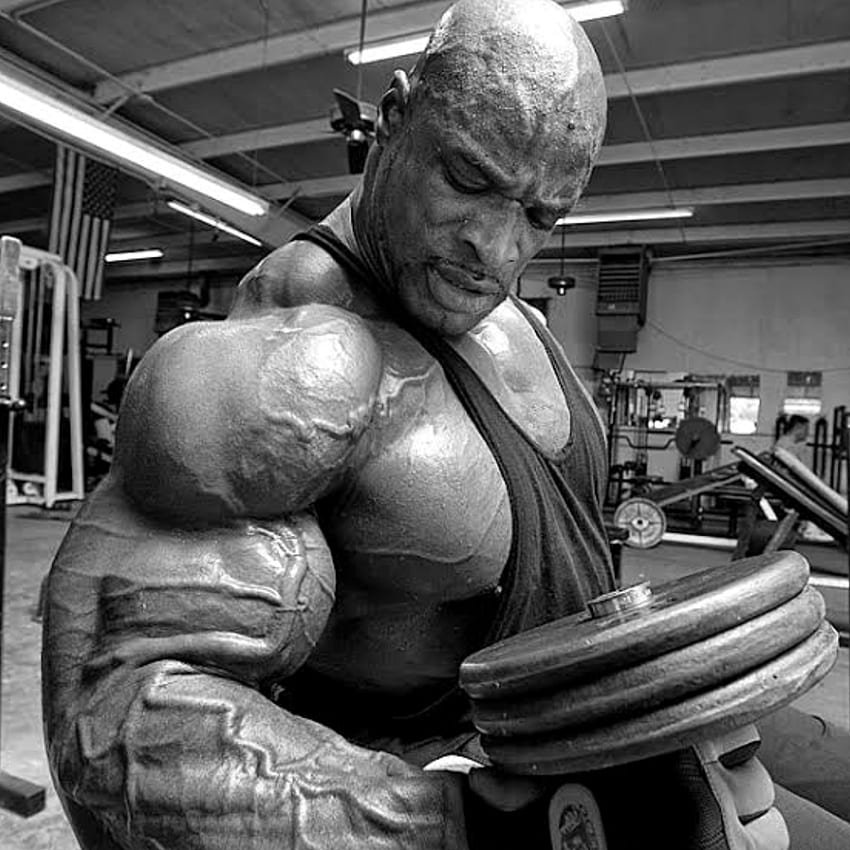
Ronnie Coleman’s catchphrases echo through gyms worldwide, influencing a shift towards more volume training.
However, his feats of strength came at a cost, leading to severe spine issues and multiple surgeries.
Ronnie Coleman’s legacy transcends trophies it’s a testament to the dedication, mental toughness, and unparalleled strength that defined an era.
Aspiring athletes should draw inspiration from their journey, understanding that while lifting heavy is a component, it must be coupled with wisdom, adaptability, and holistic well-being.
In conclusion, the blueprint for unstoppable strength, as crafted by Ronnie Coleman, is a blend of determination, strategic training, and a mindset that refuses to accept limits.
While not everyone may aspire to lift 800 pounds, the principles he embodied can guide individuals on their unique paths to strength and excellence.
As the echoes of “Yeah, buddy!” reverberate through gyms, Ronnie Coleman’s legacy lives on, an enduring source of motivation for those who dare to defy their limits.